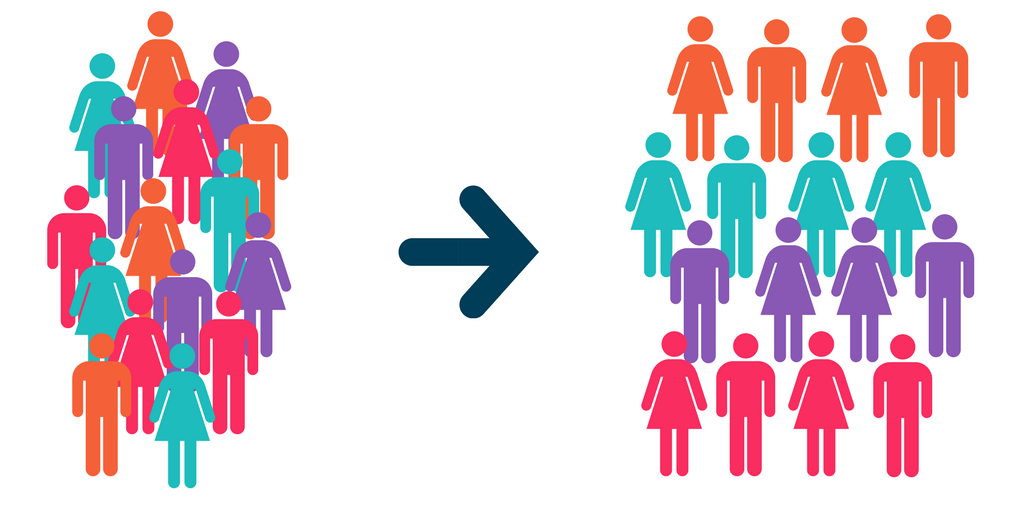In today’s fast-paced digital landscape, businesses are constantly seeking innovative ways to connect with their target audience. One of the most powerful tools at their disposal is social media. However, with the vast number of users on platforms like Facebook, Instagram, Twitter, and LinkedIn, it’s essential to employ smart strategies to ensure that your message reaches the right people. This is where social media audience segmentation comes into play. In this comprehensive guide, we’ll delve into the art of audience segmentation, exploring how it works, its benefits, and practical steps to implement this strategy effectively.
Understanding the Power of Social Media Audience Segmentation

In the bustling realm of social media, where millions of voices compete for attention, businesses must cut through the noise to effectively reach their target customers. This is where social media audience segmentation emerges as a game-changing strategy. By dividing a broad audience into distinct segments based on various characteristics, businesses can tailor their content, advertisements, and engagement strategies to resonate with specific groups.
The Importance of Knowing Your Audience
Before diving into the intricacies of audience segmentation, it’s crucial to emphasize the significance of knowing your audience intimately. Comprehensive knowledge of your audience’s demographics, behaviors, preferences, and pain points lays the foundation for a successful segmentation strategy.
The Basics of Social Media Audience Segmentation
Defining Audience Segmentation
Audience segmentation involves categorizing a larger audience into smaller, more manageable groups that share similar traits. This allows marketers to create highly targeted content and campaigns that have a higher chance of resonating with the intended audience.
Types of Audience Segmentation
1. Demographic Segmentation
Demographic segmentation divides the audience based on quantifiable characteristics such as age, gender, income, education, and occupation. This information provides valuable insights into the audience’s basic traits.
2. Psychographic Segmentation
Psychographic segmentation delves deeper by considering the psychological and emotional aspects of the audience. It examines factors like values, interests, lifestyles, and personality traits.
3. Behavioral Segmentation
Behavioral segmentation focuses on consumer behavior and purchasing patterns. It categorizes the audience based on how they interact with a brand, their buying frequency, and their response to marketing efforts.
4. Geographic Segmentation
Geographic segmentation divides the audience by their physical location. This type of segmentation is particularly useful for businesses with location-specific products or services.
Step-by-Step Guide to Implementing Social Media Audience Segmentation
1. Conducting In-Depth Market Research
Before embarking on any segmentation strategy, thorough market research is essential. This involves gathering data about your target audience’s preferences, behaviors, and pain points.
2. Utilizing Social Media Analytics Tools
Leveraging analytics tools provides invaluable insights into your audience’s online behavior. Platforms like Facebook Insights and Google Analytics offer data on engagement, reach, and demographic information.
3. Creating Buyer Personas
Buyer personas are detailed profiles of your ideal customers. Crafting these personas helps you visualize and understand the unique needs of different segments.
4. Tailoring Content for Each Segment
Customizing content for each segment ensures that your message resonates with the intended audience. This may involve using specific language, visuals, and references.
5. A/B Testing and Optimization
Constantly refining your segmentation strategy is crucial. A/B testing allows you to compare different approaches and optimize your campaigns for better results.
Benefits of Social Media Audience Segmentation
1. Enhanced Engagement and Interactions
Segmented campaigns lead to higher engagement rates as content speaks directly to the interests and needs of each group.
2. Higher Conversion Rates
Targeted content increases the likelihood of conversions as it addresses specific pain points and motivations of each segment.
3. Improved Return on Investment (ROI)
Precise targeting ensures that your marketing budget is allocated effectively, yielding a higher ROI.
4. Personalized Customer Experiences
Segmentation enables businesses to deliver personalized experiences, fostering stronger customer relationships.
Challenges and Pitfalls to Avoid
1. Overlooking Data Privacy
Respecting user privacy is paramount. Ensure compliance with data protection regulations to avoid legal issues.
2. Neglecting Constant Refinement
Audience preferences evolve. Regularly update your segmentation strategy to stay relevant.
3. Relying Too Heavily on Automation
While automation is useful, a human touch is essential to truly connect with your audience.
The Future of Audience Segmentation: Trends and Predictions
Discover emerging trends such as AI-driven segmentation and hyper-personalization, shaping the future of audience targeting.
Conclusion
In the ever-evolving landscape of social media marketing, audience segmentation emerges as a vital tool for businesses seeking to amplify their online presence. By understanding the nuances of their audience and tailoring their strategies accordingly, brands can foster deeper connections, boost engagement, and ultimately achieve greater success in their digital endeavors.
Ready to take your social media strategy to the next level? Request a demo from AIM Technologies today and discover how our advanced tools can help you implement effective audience segmentation.
FAQs
What is social media audience segmentation?
- Social media audience segmentation involves dividing a broader target audience into smaller, distinct groups based on shared characteristics for more effective targeting.
How does audience segmentation benefit businesses?
- Audience segmentation enhances engagement, increases conversion rates, improves ROI, and enables personalized customer experiences.
Is audience segmentation a one-time process?
- No, audience segmentation requires constant refinement to adapt to evolving customer preferences and behaviors.
Can small businesses benefit from audience segmentation?
- Absolutely. Audience segmentation can be especially beneficial for small businesses, as it allows them to target resources effectively and compete with larger competitors.
What is the role of AI in audience segmentation’s future?
- AI is expected to play a significant role in audience segmentation, enabling more accurate and dynamic targeting based on real-time data analysis.




